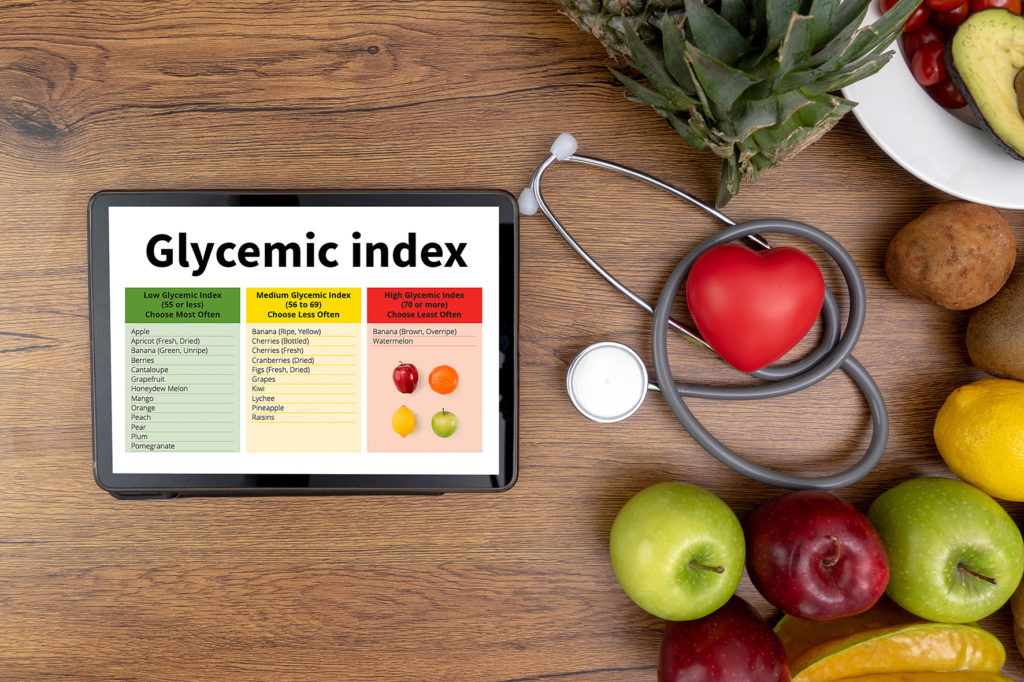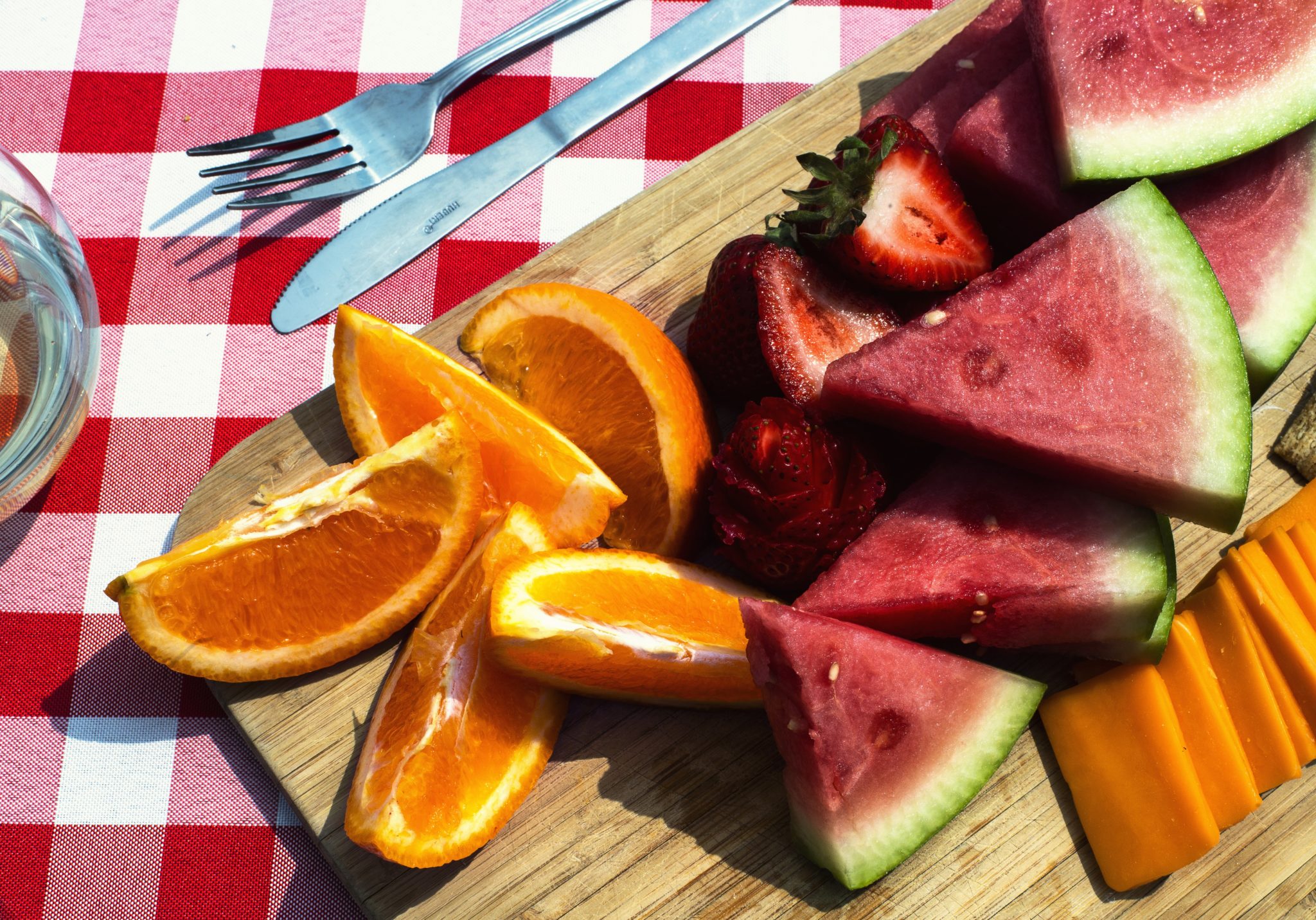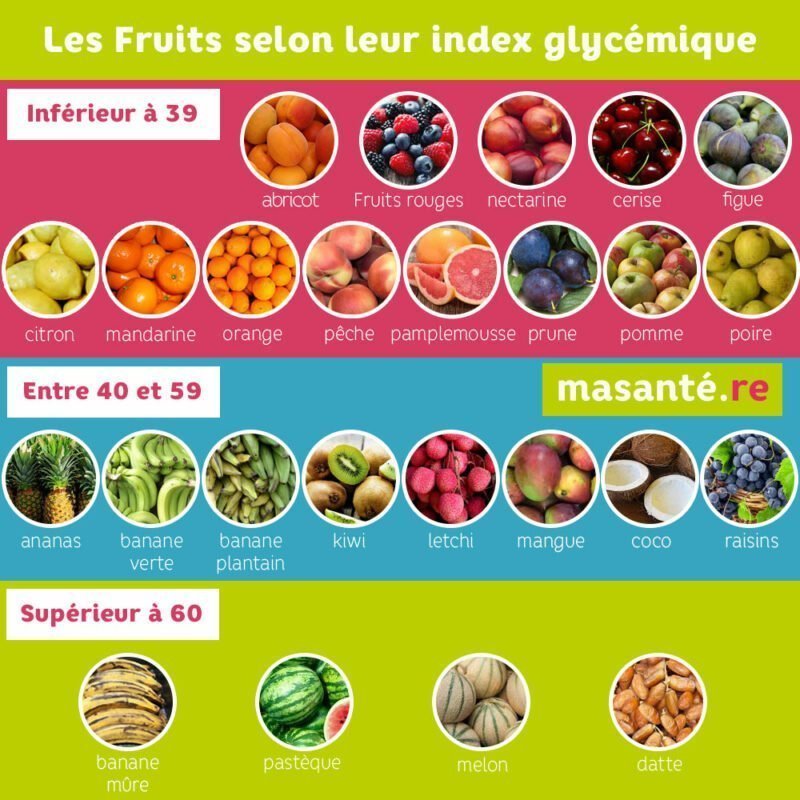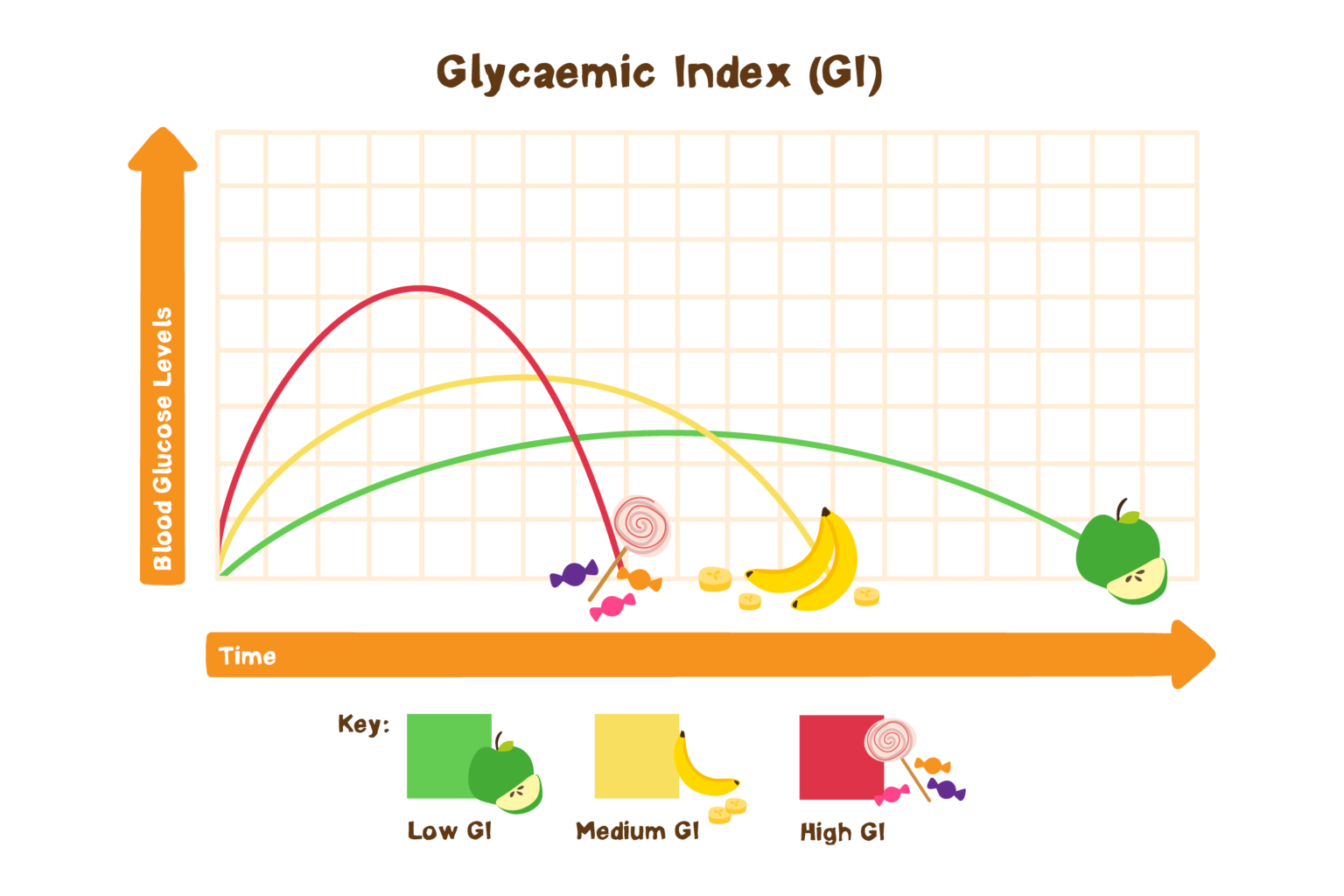
L'Indice Glycémique Indice Alimentaire Stratégique Blog Eric Favre Sport Nutrition Expert
The glycemic index (GI) is a value used to measure how much specific foods increase blood sugar levels. Foods are classified as low, medium, or high glycemic foods and ranked on a scale of 0-100..

Pin on Infographies
index values Many people with diabetes avoid fruit, afraid that the sweetness of fruits will increase the blood sugar. Fruits are full of vitamins, minerals and antioxidants all important for good health. Fruits have varying values on the Glycemic Index (GI) which rates how quickly or slowly the sugar is released into the blood stream.

Glycemic Index. Red means don't eat it!!! Index glycemique, Index
fruit juices, including 100% juice. dried fruits. watermelon and lychee, which have high GI values. pineapple, pawpaw, and rock melon, which have medium GI values. In general, the more processed a.

Un disque qui permet de visualiser rapidement l'indice glycé… Régime alimentaire pour maigrir
January 05, 2024 The glycemic index (GI) The glycemic index (GI) Diabetes Canada recommends people with type 1, type 2, or pre-diabetes choose lower glycemic index (GI) foods and drinks more often to help control blood sugar. The GI is a scale out of 100 that ranks a carbohydrate-containing food or drink by how much it raises your blood sugar.

Le sucre, c'est mal ? Découverte de l'indice glycémique. Indice glycémique, Sucre, Jus de fruit
Pour les personnes DT1 (et DT2), il est généralement conseillé de manger les fruits crus plutôt que transformés. La raison est simple : les purées, compotes, confitures, jus, sirops, sorbets, etc. ont un index glycémique plus élevé. La consommation de fruits chez les personnes ayant un diabète est aussi conseillée à raison de trois.

Index glycémique … idées pour la santé Dieta…
Un fruit qui contient principalement du glucose (comme les raisins par exemple) aura un indice glycémique plus élevé. A l'inverse, un fruit composé de glucose et de fructose verra son IG diminuer car le sucre sera utilisé et absorbé différemment par votre organisme. Facteur n°2 : L'IG d'un fruit varie selon son degré de transformation

Indice glycémique santé, perte de poids et musculation
Pour rappel, les fruits à index glycémique bas sont des fruits dont l' Index Glycémique (IG) est inférieur à 40. #1 Le pamplemousse (IG : 25) En plus d'être riche en vitamine C, le pamplemousse serait un des fruits à l'index glycémique le plus bas (25). A consommer sans modération, même hors repas ! Source : www.freedigitalphotos.net

L'indice glycémique et la charge glycémique des fruits Charge glycemique, La santé dans l
L' index glycémique (IG) est un indice propre à un aliment, qui permet de classer les glucides en fonction de leur capacité à élever la glycémie, c'est-à-dire le taux de sucre dans le sang. Il est basé sur une mesure physiologique.

Indice glycémique quel fruit choisir ? Youhou.fr
Per gram of carbo- hydrate, foods with a high glycemic index (GI) produce a higher peak in postprandial blood glucose and a greater overall blood glu- cose response during the first 2 h after consumption than do foods with a low GI.

Diabète et fruits frais à La Réunion puisje en manger ? Masanté.re
Glycemic index (GI) is a scale from 1 to 100 that shows how quickly, or how slowly, a food raises your blood sugar. Foods are assigned a value based on the food eaten by itself, without the influence of other foods. Be aware that the serving size changes for each food.

Différence entre INDEX glycémique et CHARGE glycémique Apprenez a faire les bons choix
Measurement. The glycemic index of a food is defined as the incremental area under the two-hour blood glucose response curve following a 12-hour fast and ingestion of a food with a certain quantity of available carbohydrate (usually 50 g).The AUC of the test food is divided by the AUC of the standard (either glucose or white bread, giving two different definitions) and multiplied by 100.

Épinglé sur * Santé
Glycemic index (GI) is a ranking system that measures how quickly carbohydrates in a food are broken down and absorbed into the bloodstream, causing a rise in blood sugar levels. The scale ranges from 0 to 100, with pure glucose having a GI of 100. Foods with a low GI (less than 55) are absorbed more slowly and cause a gradual rise in blood.

Les glucides ont pour rôle de nous fournir de l’énergie, afin d’alimenter nos muscles et notre
Glycemic Index and Glycemic Load of Fruits Complete Chart Fruits are a great source of health-promoting vitamins, minerals and fiber. They provide a range of benefits for people looking to improve their overall nutrition profile. But did you know that there is also something known as the glycemic index (GI) associated with fruits?

Les glucides Yuka
1/2 medium apple or banana. 1 cup blackberries or raspberries. 3/4 cup blueberries. 1 1/4 cup whole strawberries. 1 cup cubed honeydew melon. 1/8 cup raisins. Carbs aren't the only number to.

Épinglé sur Health
4 Factors That Impact a Fruit or Vegetable's Glycemic Index Rating. There are many factors that can affect a food's GI rating, such as: 1) Ripeness of the Fruit or Vegetables. Fruits and vegetables experience a shift in the starch/sugar ratio as they ripen. Unripe fruits typically have a higher starch, lower sugar content.

Indice glycémique santé, perte de poids et musculation
1 Les fruits hyperglycémiants (IG supérieur à 60) : On appelle hyperglycémiant, un aliment dont l'index glycémique est supérieur à 70. Sont classés hyperglycémiants : - Datte (IG = 103) - Pastèque 72 - Melon 67 - Raisin sec 64 - Figue séchée 61 - Cerise 63 - Banane bien mûre 65 - Abricot au sirop 64 2